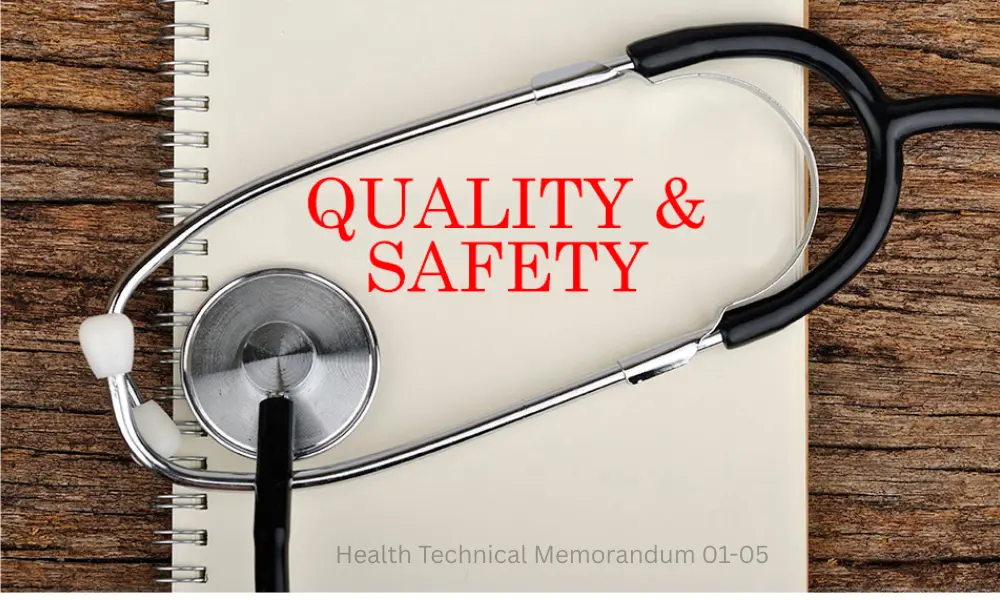Health Technical Memorandum 01-05: A Complete Guide for Compliance and Infection Control

Introduction
When it comes to infection control and safe practice in dentistry and healthcare, Health Technical Memorandum 01-05 (HTM 01-05) is the gold standard. Whether you run a small dental clinic or a large healthcare facility, this document outlines the critical steps needed to keep patients safe and facilities compliant. If you’re looking to understand what HTM 01-05 is and how to implement it effectively, you’re in the right place.
Table of Contents
Understanding HTM 01-05
HTM 01-05 is a guidance document issued by the Department of Health in the UK. It focuses on decontamination in primary care dental practices, though its principles are useful across many healthcare settings. The main goal is simple—reduce the risk of infection and promote safe clinical environments.
It applies to both NHS and private practices, setting clear benchmarks for sterilization, disinfection, and overall hygiene.
Core Principles of HTM 01-05
HTM 01-05 revolves around three key principles:
Infection Prevention and Control
Every step, from patient entry to instrument reuse, must prevent cross-contamination. It outlines protocols for sterilizing instruments, cleaning surfaces, and even airflow management.
Risk Management
The document promotes a risk-based approach, meaning you evaluate every process based on its potential hazard to patients and staff.
Continuous Improvement
Practices are encouraged to go beyond the essential requirements and work toward best practice standards. It’s not just about meeting the minimum—it’s about getting better over time.
Key Sections of HTM 01-05
HTM 01-05 is detailed, covering everything from instrument handling to waste disposal.
Decontamination Processes
These include:
- Cleaning (manual or machine)
- Disinfection (chemical or thermal)
- Sterilization (via autoclaves)
Workflow Design
Clean and dirty areas must be clearly separated. This reduces the chance of recontamination and improves efficiency.
Waste Disposal
Proper waste segregation is vital—clinical waste, sharps, and general waste all need separate disposal systems.
Decontamination of Dental Instruments
Proper instrument processing is the backbone of HTM 01-05.
Manual Cleaning
Used when machine cleaning isn’t possible. Requires detergents, hot water, and strict visual inspection.
Ultrasonic Cleaners
Ideal for removing debris before sterilization. Instruments are submerged in a bath that vibrates to loosen particles.
Washer-Disinfectors
These automate the cleaning and disinfecting process, ensuring consistency and reducing human error.
Sterilizers / Autoclaves
Steam sterilizers are the most reliable. HTM 01-05 requires daily tests and cycle records to ensure effectiveness.
Equipment Maintenance Guidelines
Maintaining equipment is non-negotiable.
Daily Checks
Look for signs of wear or malfunction. Clean filters and check temperature gauges.
Weekly Testing
Test ultrasonic cleaners and autoclaves using indicators or spore tests.
Annual Validation
Professional servicing ensures compliance and extends equipment life.
Staff Roles and Responsibilities
HTM 01-05 puts a strong emphasis on team responsibility.
- Training must be updated regularly.
- Clear documentation ensures traceability.
- Audits hold everyone accountable for their role in infection control.
HTM 01-05 Best Practices
To go beyond basic compliance, implement these:
Separate Zones
Keep “dirty” and “clean” workflows apart. Use color coding if needed.
PPE Usage
Gloves, aprons, masks—wear the right gear at every step.
Sharp Instrument Handling
Use containers designed for sharps and always dispose immediately after use.
Patient Safety and Confidence
Patients are becoming more aware of hygiene standards. Visible compliance with HTM 01-05 boosts trust and attracts referrals.
From sterilized instruments to clean uniforms, patients notice details.
Documentation and Record Keeping
Good records mean good defense.
- Sterilization cycles
- Cleaning logs
- Training records
Keep them organized, digital if possible. Store for a minimum of two years.
HTM 01-05 Compliance Levels
There are two levels:
Essential Requirements
The bare minimum to operate legally. Includes basic sterilization and record keeping.
Best Practice
This includes use of automated cleaning, advanced tracking systems, and quality assurance programs.
Moving to best practice often requires investment in new technology, but it pays off in patient safety and legal protection.
Inspection and Audits
Be ready anytime. Inspectors look for:
- Equipment maintenance logs
- Staff training records
- Cleanliness of decontamination room
Mock audits can prepare your team and reduce surprises.
Challenges in Implementation
Yes, HTM 01-05 can be tough to adopt fully.
Cost Factors
Washer-disinfectors and autoclaves aren’t cheap, but they’re worth it.
Space Issues
Small clinics might struggle to separate clean and dirty zones. Creative layout design helps.
Staff Resistance
Change is hard. Regular training and communication make it easier.
Future of HTM 01-05
HTM 01-05 will likely evolve with technology. Expect:
- More digital monitoring systems
- Greater emphasis on environmental impact
- Alignment with other NHS infection control policies
Conclusion
Health Technical Memorandum 01-05 is more than a set of rules—it’s a commitment to patient care and professional excellence. Whether you’re starting a new practice or reviewing your existing protocols, following HTM 01-05 helps ensure a safe, compliant, and successful environment. Don’t wait for an inspection to tighten your protocols—make infection control your daily priority.
FAQs
1. What is the difference between HTM 01-05 and HTM 01-06?
HTM 01-05 focuses on decontamination in primary care dental practices, while HTM 01-06 is more general and applies to other healthcare settings.
2. How often should staff be trained on HTM 01-05?
At least once a year, but more frequently if new equipment or procedures are introduced.
3. Is HTM 01-05 legally binding?
It’s not law, but non-compliance can lead to closure or legal action during inspections.
4. What happens if a clinic fails HTM 01-05 inspection?
They may be given a warning, face temporary closure, or lose their NHS contracts until standards are met.
5. Can digital tools help with HTM 01-05 compliance?
Yes! Software can track sterilization cycles, audit logs, and training schedules for full traceability.






